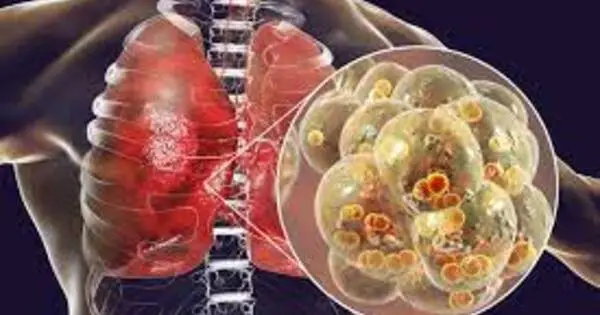Certain vegetables include molecules that may aid in the treatment of lung infections. Vegetables, along with fruits and other plant-based diets, are high in bioactive chemicals that have been shown to improve health. Some of these substances, such as antioxidants, anti-inflammatory drugs, and antibacterial molecules, may help the body fight infections in the lungs.
Researchers at the Francis Crick Institute discovered that chemicals included in vegetables such as broccoli and cauliflower aid to maintain a healthy lung barrier and reduce infection. The aryl hydrocarbon receptor (AHR) is a protein identified in barrier areas such as the gut and the lung. Natural compounds in cruciferous vegetables, such as kale, cauliflower, broccoli, or cabbage, are dietary ‘ligands’ for AHR, which means they activate AHR to target a number of genes when consumed. Some of the genes that have been targeted turn off the AHR system, allowing it to self-regulate.
The effect of AHR on immune cells is widely known, but new study published today in Nature demonstrates that AHR is also extremely active in endothelial cells that line blood arteries in the lung.
What we’ve identified is a gut-lung axis – linking diet to protection against lung infection via endothelial cells. It will be intriguing to explore the impact of other respiratory viruses on AHR, as well as whether other chemicals in our diet affect lung function via pathways other than AHR.
Jack Major
Because it must enable oxygen to enter, the lung barrier between the body and the air outside is just two layers thick, one of endothelial cells and one of epithelial cells. However, the barrier must be strong enough to withstand pollution, viruses, and germs.
The researchers performed a series of mouse tests to demonstrate how AHR affects lung barriers. Blood was found in the airspaces of the lungs of mice infected with the flu virus because it had spilled across the broken barrier. The researchers then demonstrated that AHR could keep the barrier from leaking by overactivating it: when AHR was stimulated, they detected less blood in the lung gaps.
They also found that mice with enhanced AHR activity didn’t lose as much weight when infected with flu, and were able to better fight off a bacterial infection on top of the original virus. When AHR was prevented from being expressed in the lung endothelial cells of infected mice, more blood and immune cells were seen in the air spaces, showing greater damage to the barrier.

The researchers also discovered that flu infection reduces protective lung AHR activity, but only in mice who were administered AHR ligands before to the sickness. These findings link food consumption to AHR activity and outcome in viral infection: when infected mice were unwell, their intake of AHR ligands was lowered, and the AHR system was less active, resulting in increased lung damage.
Despite the infection-induced decrease in AHR activity, feeding mice an AHR ligand-rich diet was beneficial: these mice had superior barrier integrity and less lung damage after infection than mice fed a control diet. These results indicate that AHR has a protective effect on the lung barrier which is impacted by infection, but can be improved by the right diet.
Andreas Wack, Group Leader of the Immunoregulation Laboratory at the Crick, said, “Until recently, we’ve mainly looked at barrier protection through the lens of immune cells. Now we’ve shown that AHR is important for maintaining a strong barrier in the lungs through the endothelial cell layer, which is disrupted during infection.”
“People may be less likely to maintain a good diet when they’re ill, so aren’t taking in the molecules from vegetables which make this system work. It’s a good idea to eat lots of cruciferous vegetables anyway, but this shows it’s even more important to continue eating them when you’re ill!”
“What we’ve identified is a gut-lung axis – linking diet to protection against lung infection via endothelial cells,” said Jack Major, former PhD student in the Wack lab and currently visiting scientist at the Crick. This study focused on flu, however earlier studies has found that COVID-19 may also reduce AHR activity in the lung. It will be intriguing to explore the impact of other respiratory viruses on AHR, as well as whether other chemicals in our diet affect lung function via pathways other than AHR.”
















